We reached the end of the school year in parts of the Americas. I can’t believe I’m already returning to the Caribbean to wrap up our Mangrove Education & Restoration programs (B.A.M. and J.A.M.I.N.) in this third and final installment.
For the past several months, the year one B.A.M. and J.A.M.I.N. students have been growing their mangrove propagules (seedlings) in their classroom. The students have been taking growth measurements and making observations in their mangrove journals. The seedlings are growing tall, even in Jamaica, where the program was delayed for two months due to Hurricane Matthew. This past month, students have been acclimating the mangroves to salt water, so that the seedlings are able to easily transition to their salty habitat when transplanted.
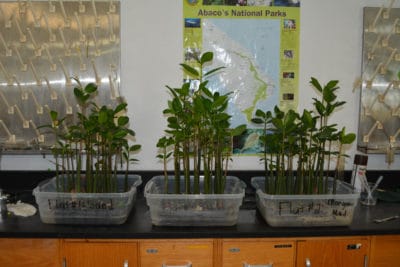
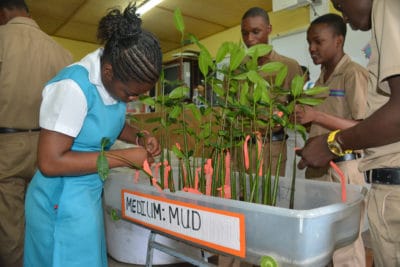
J.A.M.I.N. students at William Knibb High School mark their mangrove seedlings with flagging tape.
During this phase, the year 1 students will return to their original field trip site that they explored during the first phase. They will plant the mangrove propagules (seedlings) that they have been growing for the past several months in their classrooms. Then, in the classroom, we will teach the students how to graph their data and draw conclusions from it. Students will answer the original question – which type of media do mangrove propagules grow best in: mangrove mud, sand, or pebbles.
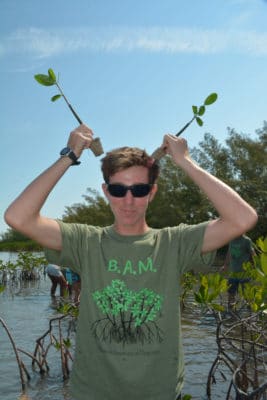
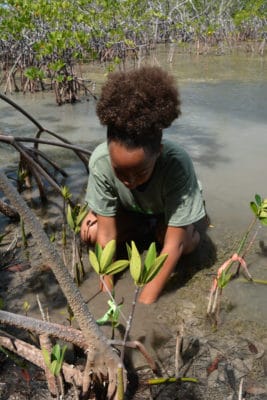
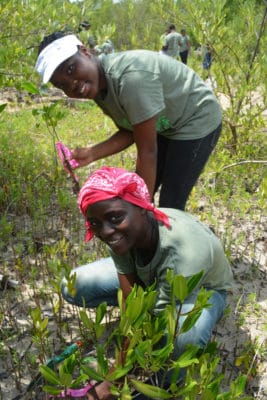
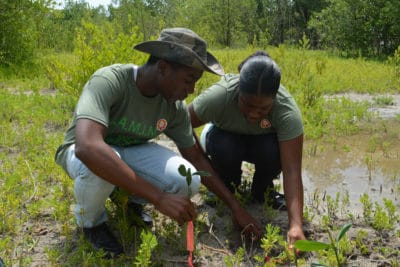
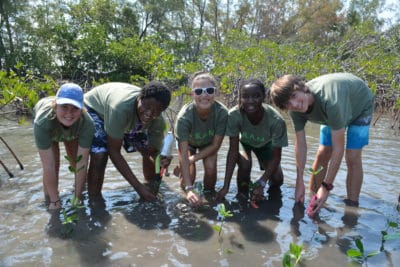
Students in the Year 1 B.A.M. and J.A.M.I.N. programs plant their mangrove seedlings.
The year 2 B.A.M. and J.A.M.I.N. students will return to their field trip site for a third time to monitor the mangroves in their 5 x 5 meter squared quadrat. The students will again collect data about the living (mangroves) and non-living (salinity, dissolved oxygen, soil texture, etc.) things inside their quadrat.
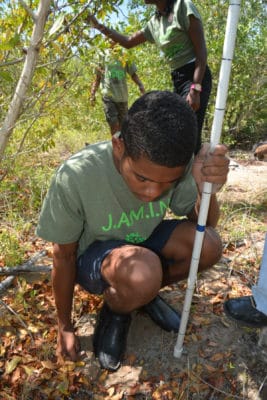
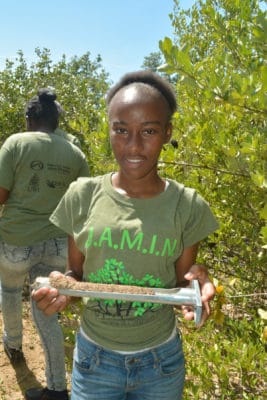
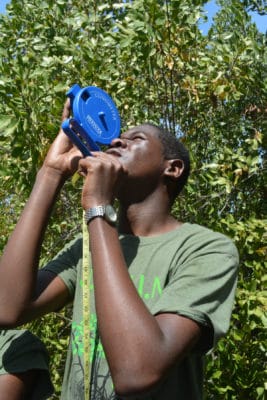
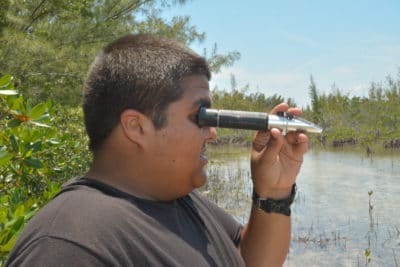
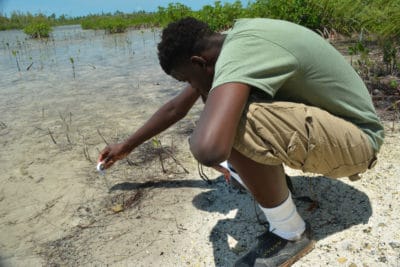
Students in the Year 2 B.A.M. and J.A.M.I.N. programs use scientific instruments to measure various abiotic factors in the mangroves.
In the classroom, we will teach students how to analyze the three data sets that they have collected while on the field trips. The students will analyze the data and look for trends that might explain what happens in their quadrats over a period of 6-8 months. For instance, did the mangrove trees grow from September to May? If so, by how much and why? Did the salinity change and why? Students will answer questions such as these and then they write up a short lab report explaining their results.
I’m excited to get started! Stay tuned for more updates.